When people think about Jollof Rice, they usually think about rice cooked in tomato stew; however, there are other local variations that are just as amazing. These variations also tell a story. They can be a small glimpse of the history of Jollof or they can celebrate unique flavours in those countries. In this blog post, I will be sharing some less popular but equally amazing Jollof Rice recipes that many might not be too familiar with.
What is Jollof Rice
Before we get into the post, if you are new here and are wondering what exactly Jollof Rice is, please check out a series of blog posts I have done on Jollof Rice. For details on what it is and a recipe, check out my Jollof Rice Recipe. To learn more about Jollof Rice History, please check out this post. And lastly, to learn about the most popular ways to cook Jollof Rice depending on the country, please check out this post.
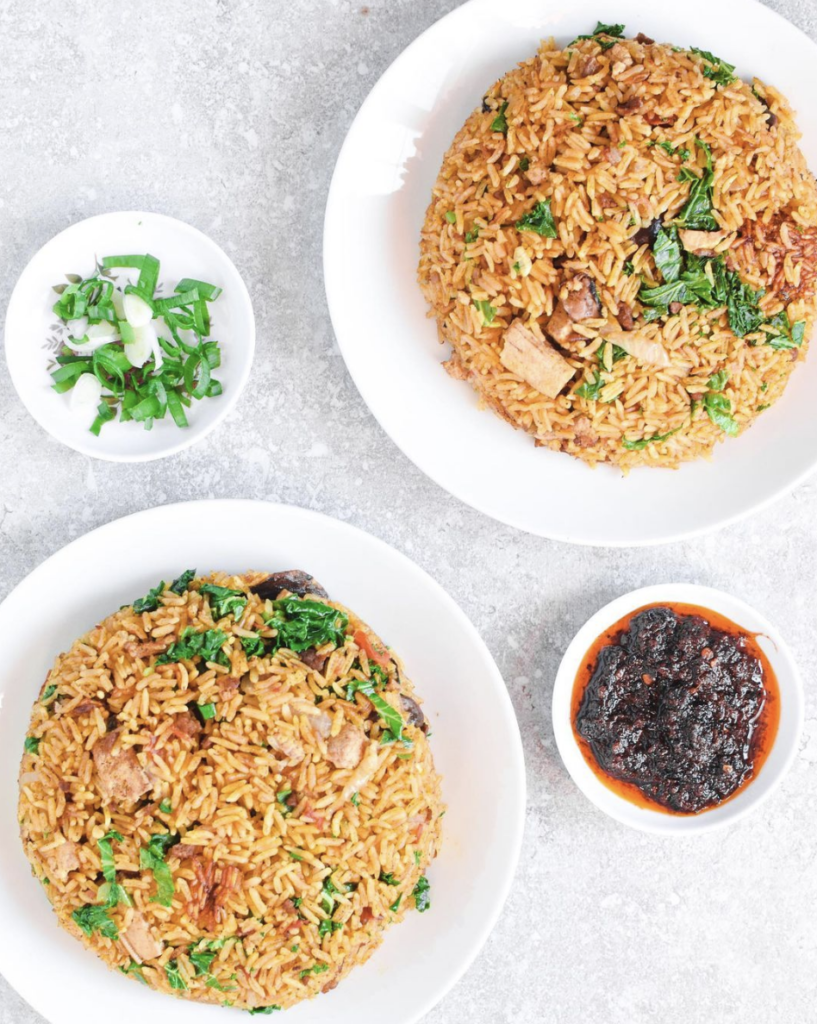
Native Jollof/Riz Gras Villageois
Native Jollof or Riz Gras Villageois is a unique type of Jollof you can find in select West African countries, such as Nigeria and the Ivory Coast. This Jollof Rice is unique for a number of reasons. The oil of choice is palm oil, which gives a really fragrant and almost buttery smell and flavour. If you want to learn more about Palm oil in West African cooking, please check out this post (click here).
Other important ingredients include African Locust beans/Dawa Dawa, which gives the dish an umami smell and taste, and scent leaves (African Basil), which adds colour and flavour. The palm oil and Dawa Dawa are a must for this dish. However, some include other traditional spices like uziza seeds/negro pepper, or omit the scent leaves and choose other greens like spinach. Lastly, the choice of protein is dried and smoked fish but others include other seafood like shrimp.
Nigerian Native Jollof
Although the preparation in Nigeria is similar to that of Ivory Coast, there are a few differences. These differences are based on how Jollof Rice is cooked in these countries. For Nigerian Native Jollof, the base of the stew is red peppers, onions and a few tomatoes. The peppers are a combination of romano, pimento, bell peppers as well as scotch bonnet pepper. Another big difference with Nigerian Village Jollof is the use of dried crayfish; the purpose is to build more umami flavour. Like any Nigerian rice dish, the choice of rice is long grain parboiled rice. For added, flavour scent leaves/African basil is added. Lastly, Nigerian native Jollof not only includes dried and smoked fish but also cowhide (which they call pomo). Unlike regular jollof rice, the spices in this dish are kept rather simple to allow the flavours of the ingredients to shine through.
Ivorian Riz Gras Villageois
The Ivorian version is also similar to that of regular Ivorian Jollof. Ghanaians might also see a similarity with this Jollof preparation as the techniques are similar. Unlike Nigerian Native Jollof, Ivorian Riz Villageois uses a base of tomatoes, onions and scotch bonnet pepper. The stew is still made the same way with the tomato base fried in palm oil and onions with dried crayfish and locust beans. Another major difference with Ivorian Riz Villageois is the choice of rice. Similar to that of regular Ivorian and Ghanaian Jollof, the rice of choice is long grain Jasmine rice. Lastly, the proteins are kept to dried and smoked fish.
Theboudienne Bou Wëhk/ Senegambian White Jollof
The more I learn about Jollof Rice from Senegal and Gambia, the more I realize there are a ton of variations to Jollof Rice. The Jollof rice is made the exact same way as red thebioudienne/benachin; however, there are a few differences. Before I get into the details, you can check out my full explanation on my last blog post detailing Senegalese Jollof Rice (click here)
The process of making this type of Jollof rice is very similar to that of the red jollof rice. The only difference is that the tomatoes are reduced significantly (no tomato paste) and the onions are increased. The herb paste used to stuff the fish is also an important part of the stew base. Making these small adjustments results to a Jollof Rice that is off-white, not red.
Kwenkwen/Shinkaafa
Kwenkwen/Shinkafa is a local Jollof rice from Northern Ghana. It is actually quite popular in Kumasi as a street food. Kwenkwen gets its name from the fact that the sellers hit a metal pan that makes a kwenkwen sound. Kwenkwen is also known as shinkaafa, which means rice in Hausa. This Jollof Rice is truly local. It is made with local Gomba rice, which is an indigenous short grain brown rice variety.
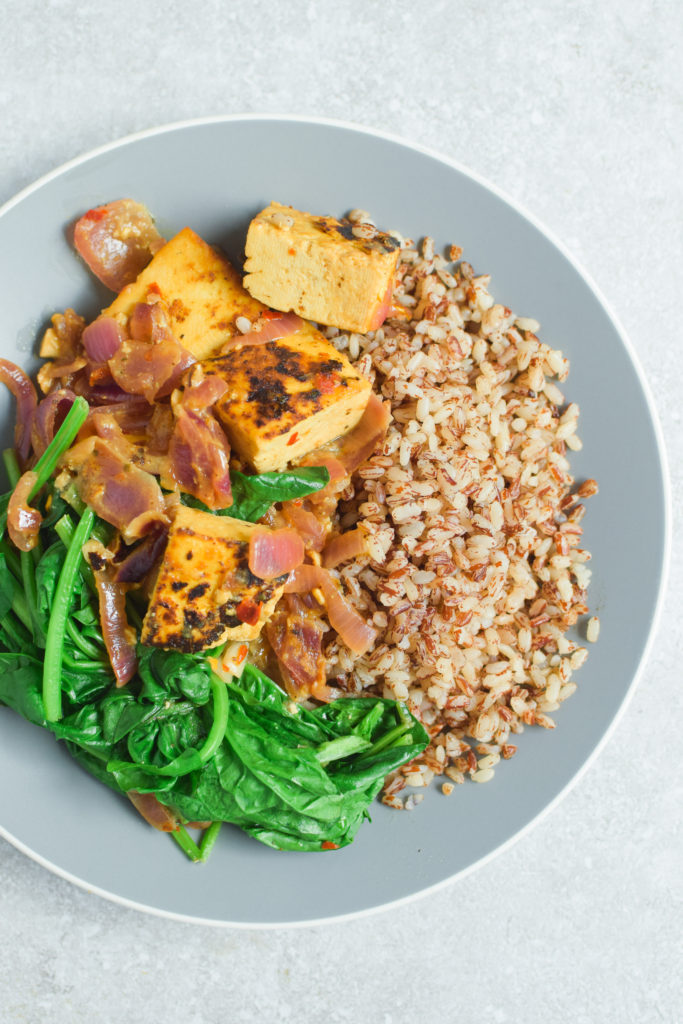
The Kwenkwen Jollof Rice is made with fermented fish and dried fish. This is markedly different from the typical Ghanaian Jollof Rice. It is also made with local spices like grains of selim and Dawa Dawa, but this is dependent on the chef. Like any Jollof Rice, a stew is made with fermented fish, dried fish, tomatoes, onions, ginger, garlic, chilli and spices. The stew is separated and the rice is cooked in half the stew. The dish is served like waakye with spaghetti, shito, and salad, with the addition of beans.
Dafaduka
Lastly, Dafaduka. Dafaduka is similar to Kwenkwen as it is also a northern Ghana Jollof Rice that uses mainly dried fish. However, Dafaduka uses shea butter as the oil of choice. It also uses a lot of local spices like grains of selim and calabash nutmeg. For more details on local spices, please check out this blog post. The jollof is prepared just like you would ghana jollof. However, you will substitute vegetable oil for shea butter, add a considerable amount of dawa dawa and go lighter on the tomato paste. The rice of choice is still long-grain, jasmine rice.
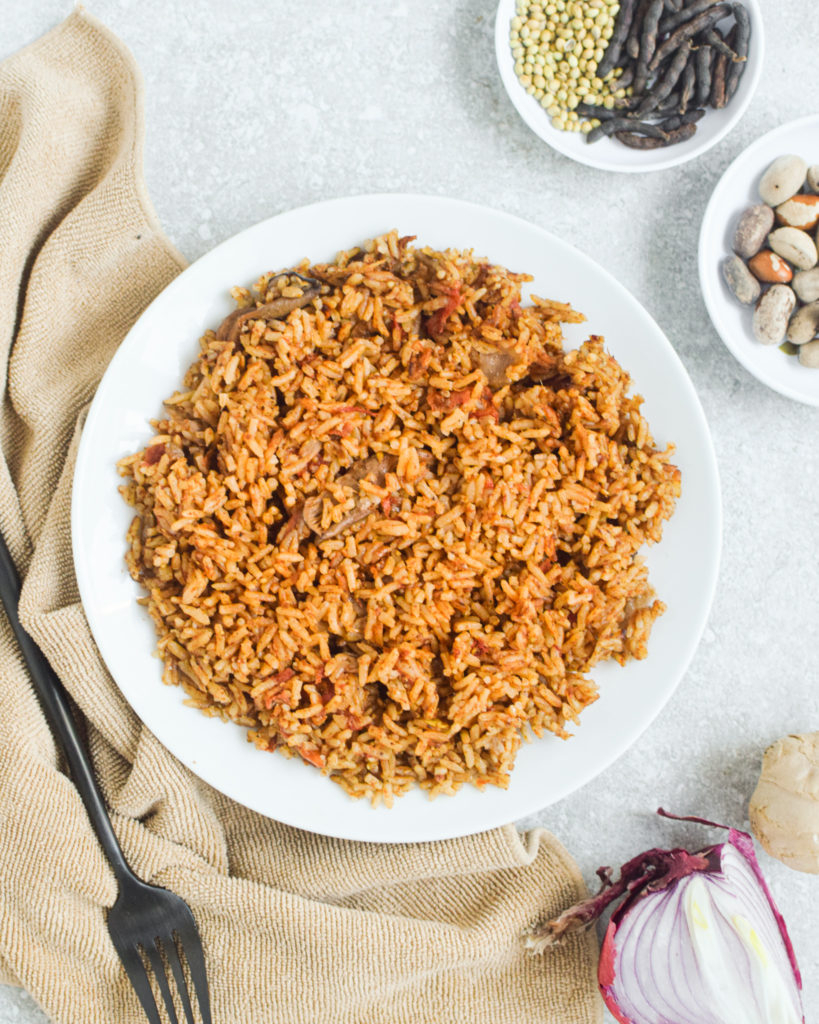

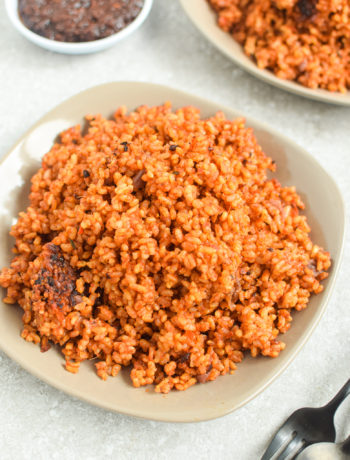
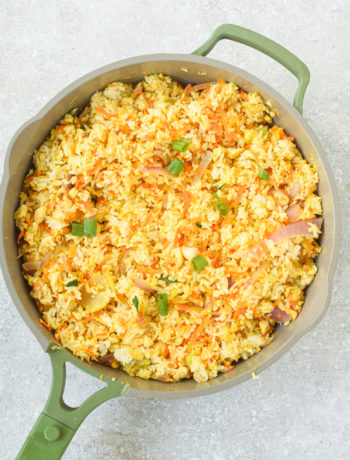
No Comments